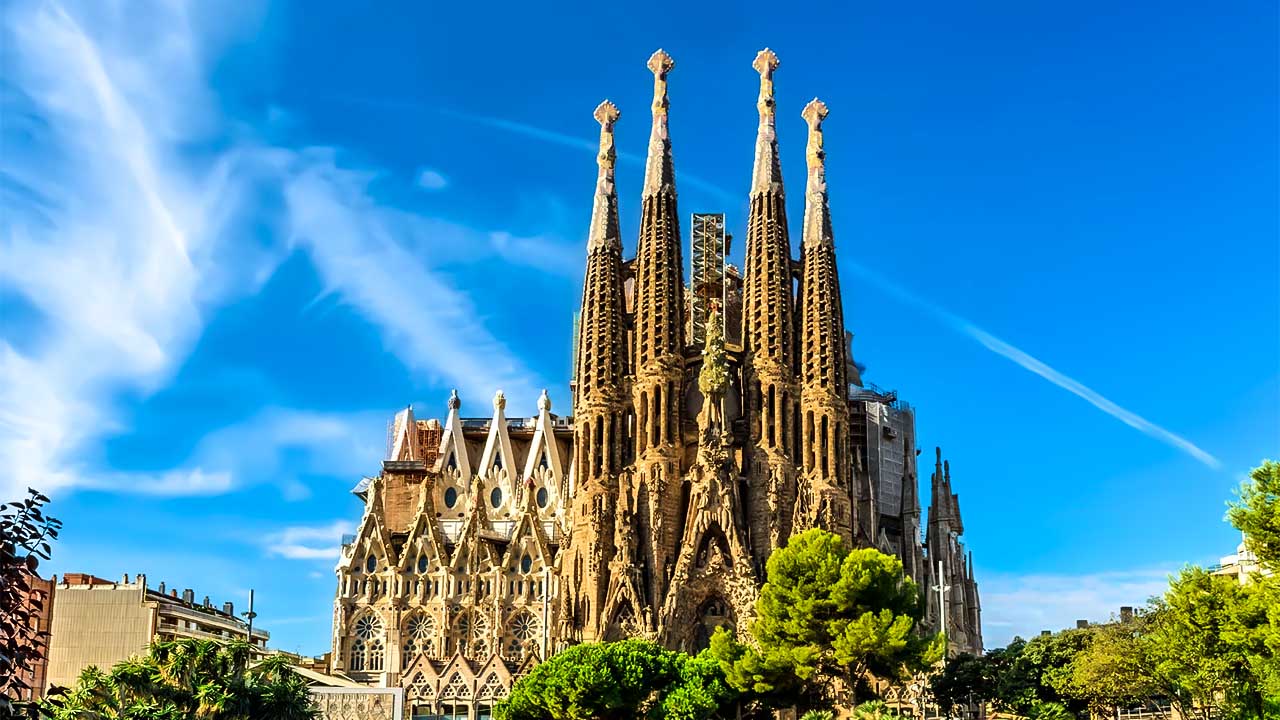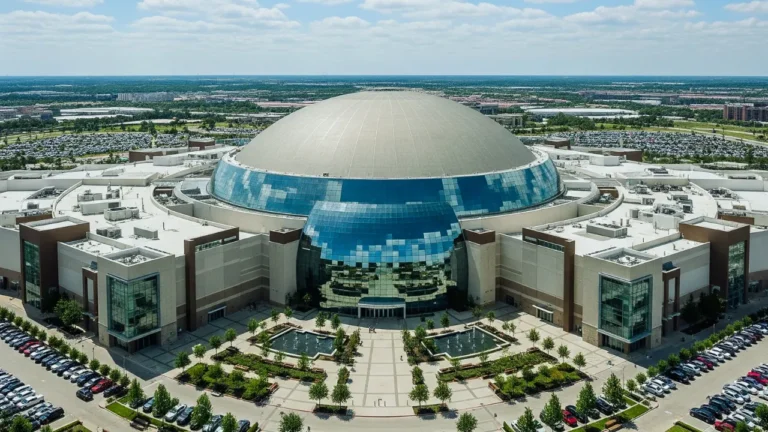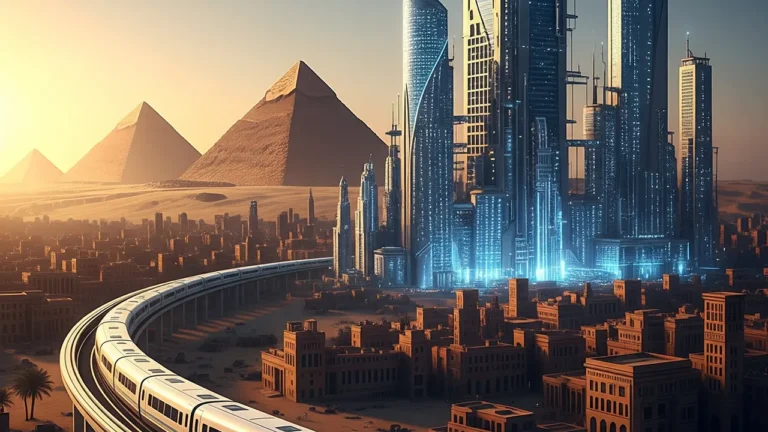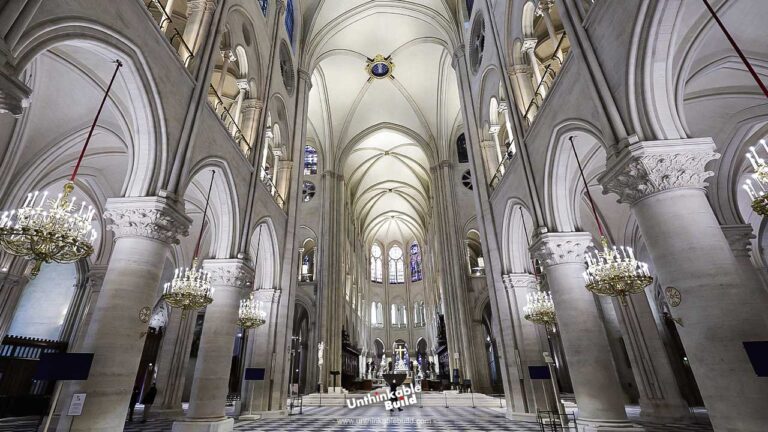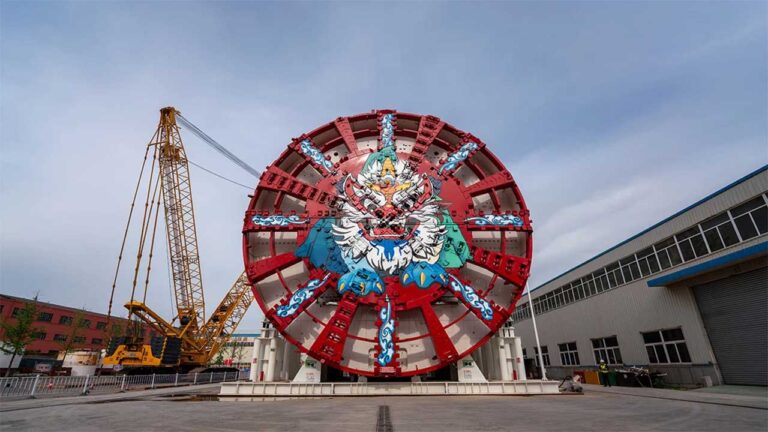Finally Iconic Sagrada Familia to Be Fully Completed in 2026
Numerous buildings across various countries worldwide have undergone prolonged construction periods. Delays may stem from factors like the building’s size, alterations in design or architects, construction techniques, or financial constraints. Yet, it’s rare to encounter a structure lingering in an incomplete state for over a century without resolution. Nestled in Europe, there exists such a grand edifice boasting a distinctive architectural flair. Despite numerous projected completion dates, this dream remains unrealized, casting a shadow over its illustrious vision.
We’re undoubtedly discussing the iconic Basilica de la Sagrada Familia or the Church of the Holy Family in Barcelona, Spain. This Gothic architectural marvel stands unparalleled globally, renowned for its distinct design and texture. The question of why the construction of the world’s largest unfinished Catholic Church, adorned with eighteen towering spires, remained incomplete since 1882 remains unanswered by anyone but the La Sagrada Familia Foundation. Finally, after a long journey, the completion of this remarkable edifice was announced, with construction slated to conclude in 2026.
The Basílica de la Sagrada Família, commonly referred to as Sagrada Família, is a church being constructed in the Eixample district of Barcelona, Catalonia, Spain. Notably, it stands as the largest incomplete Catholic church globally. Crafted by the Catalan architect and designer Antoni Gaudí.
The origins of Sagrada Familia can be traced back to around 1866 when a community dedicated to Saint Joseph envisioned building a cathedral in his honor. On March 19, 1882, coinciding with the feast of San José, the inaugural stone was laid on a plot spanning 12,000 square meters. Initially entrusted to architect Don Francisco de Paula del Villar y Lozano, he departed from the project shortly after its commencement due to a disagreement.
Assuming the role of chief architect, Antoni Gaudí revolutionized the project with his distinctive architectural and engineering flair, blending elements of Gothic and curvilinear Art Nouveau styles. He dedicated the remainder of his life to the endeavor, with his final resting place being the church’s crypt. Tragically, upon his passing in 1926, less than a quarter of the project had been realized.
Gaudí envisioned the monumental church adorned with 18 spires, of which 12 have been fully constructed. The remaining six towers, including the central spire towering at 172 meters, are presently undergoing construction. These 18 spires constitute a pivotal aspect of Gaudi’s design, symbolizing the four evangelists and the twelve apostles. Additionally, one spire will serve as a representation of the Virgin Mary, while the central tower will stand proudly amidst the four evangelist towers, serving as a dedication to Jesus Christ. This central spire will soar as the tallest among the towering structures. Upon experiencing the Sagrada Familia up close, one truly comprehends how pictures and videos online fail to capture its magnificence. Gaudí’s unique Gothic naturalism style is truly captivating, blending gargoyles, plants, trees, animals, and religious figures into a tapestry that may seem somewhat grotesque from a distance but mesmerizing when seen up close.
Also Read: 161 Maiden Lane – New York’s Leaning Skyscraper
Upon their completion, Sagrada Familia will claim the title of the world’s tallest church, surpassing Ulm Minster in Germany by nearly 10 meters.
The interior of the Sagrada Familia showcases remarkable engineering feats. Contrasting with the Notre Dame Cathedral in Paris before the recent fire, both structures, despite sharing a Gothic style, exhibit significant differences. Notably, Sagrada Familia’s roofs and towers lack buttresses for support. Visualize a wall tasked with sustaining a hefty roof: the wall could potentially bend, buckle, or even collapse under the immense pressure.
Buttresses are robust structures that incline against a wall, provide crucial support by counteracting the weight of the roof, thus preventing wall deformation and collapse. The Notre Dame Cathedral is renowned for its impressive flying buttresses, emblematic of Gothic engineering prowess. However, Gaudí’s monumental design for Sagrada Familia, lacking such traditional supports, raises questions about its stability. How did Gaudí manage to construct such vast vaulted ceilings without buttresses, ensuring structural integrity? The answer lies with his mentor, Joan Martirel.
Martirel imparted to Gaudí a revolutionary engineering method known as graphic statics. While commonplace today for calculating and stabilizing structures, this technique involves intricate mathematical computations, particularly for intricate designs like Sagrada Familia. Gaudí’s reliance on models rather than documented calculations is notable, especially considering the absence of modern computing technology. Yet, his legacy endures through the multitude of models he left behind.
The construction history of the Sagrada Familia spans a lengthy and intricate timeline, marked by significant developments. Under Gaudi’s guidance, the construction progressed over the subsequent four decades until his passing. However, by that time, less than a quarter of the project had been completed.
Gaudí passed away on June 10th, 1926, taking his brilliance with him. In the absence of a comprehensive plan left by Gaudí, his apprentices assumed responsibility for continuing the construction of La Sagrada Familia. However, this presented challenges due to the lack of finalized blueprints.
Following his demise, construction faced setbacks, including financial constraints and interruptions caused by the Spanish Civil War in 1936. Unfortunately, during this period, a substantial portion of Gaudi’s original plans were lost.
On April 19, 2011, an arsonist ignited a small fire in the sacristy, prompting the evacuation of tourists and construction workers. The incident resulted in damage to the sacristy, with firefighters taking 45 minutes to contain the blaze.
Furthermore, amidst the COVID-19 pandemic in Spain, construction came to a temporary halt on March 11, 2020, leading to the closure of the basilica. This marked the first interruption in construction since the Spanish Civil War. Additionally, the Gaudí House Museum in Park Guell was also shuttered. The basilica eventually reopened on July 4, 2020, initially welcoming key workers.
Also Read: Isthmus of Tehuantepec: Mexico’s New Corridor to Replace the Panama Canal
On November 29, 2021, a 7-meter twelve-pointed illuminated crystal star was affixed to one of the main towers of the Basilica, dedicated to the Virgin Mary. However, local residents expressed concerns regarding proposed plans to construct a large stairway leading up to the unfinished main entrance of the Basilica. This development could potentially necessitate the demolition of three city blocks, displacing around 1,000 residents and affecting several businesses.
Present designs draw inspiration from both surviving and reconstructed materials, alongside reimagined adaptations of the original blueprint.
The Sagrada Familia stands as the largest and most monumental among the numerous buildings crafted by the Catalan architect in Barcelona. Notably, the first house he designed in the city opened to the public in 2017, underscoring his enduring legacy.
With tourism now serving as a dependable source of revenue, nearly 5 million visitors actively contribute to the advancement of the project. Approximately half of the generated funds are directed towards construction efforts, while the allocation of the remaining finances remains undisclosed.
Considered a marvel of contemporary architecture, the Sagrada Família’s unfinished status adds to its timeless allure. As one of the world’s most renowned unfinished buildings, Barcelona’s Sagrada Família continues to captivate audiences worldwide.
In October 2023, significant progress was made in the construction of the landmark, with five out of the six central towers fully erected. To commemorate this milestone, the Junta Constructora del Temple Expiatori de la Sagrada Família announced a special Mass scheduled for November 12, 2023.
The previous year witnessed the illumination of the towers of the Evangelists Luke and Mark, marking the completion of these two impressive structures, each towering at 135 meters in height.
In 2018, trustees of Barcelona’s historic Sagrada Família reached an agreement with the city council to settle a $41 million debt resulting from the absence of appropriate building permits. Subsequently, the building permit was finally issued in 2019, facilitating the ongoing construction efforts.
Five generations of individuals have witnessed the evolution of the basilica. The anticipated completion date of this mega structure is 2026, coinciding with the 100th year of Gaudi’s death. Upon its completion in 2026, Sagrada Familia will have taken ten times longer to construct than the Great Pyramids, 123 years longer than the Taj Mahal, and 50 years longer than the Great Wall of China.
Share your thoughts on this remarkable architectural marvel and engineering feat nestled in the heart of Barcelona.

